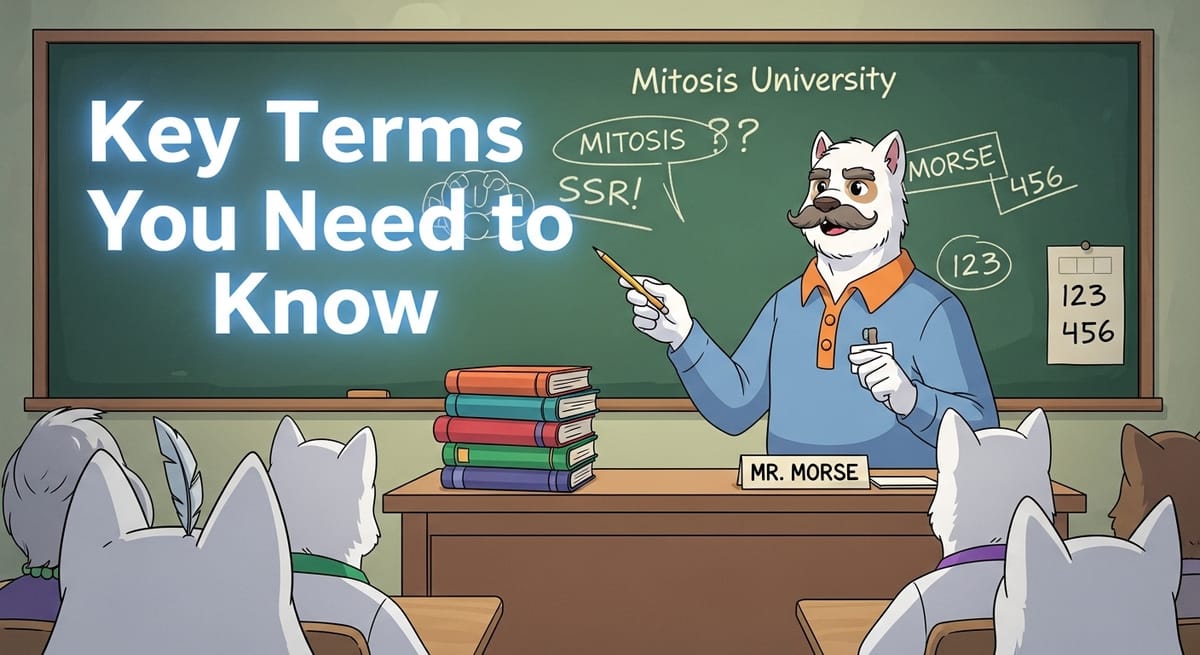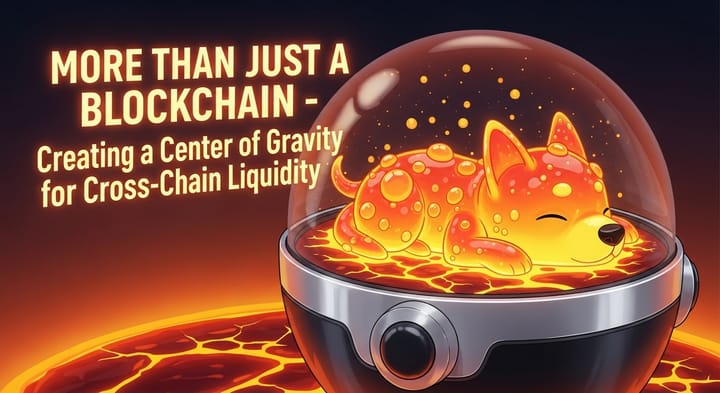A Beginner's Cross-Chain Dictionary: Key Terms You Need to Know

1. Part 1: The Fundamental Concepts
Welcome to the world of cross-chain technologies! If you've ever felt lost in a sea of complex terms like "interoperability," "wrapped tokens," or "AVS," don't worry – you're not alone. This space is filled with technical jargon, but understanding the basic concepts is the key to confidently using Web3 and protocols like Mitosis.
This guide is your personal dictionary. We'll break down key terms in simple language and show what role they play in the Mitosis ecosystem.
1. Interoperability
- What it is: In simple terms, it's the ability of different, independent blockchain networks (like Ethereum, Polygon, and Solana) to "talk" to and interact with each other, exchanging data and value.
- Analogy: Imagine interoperability as the ability to call from your mobile carrier to a number on any other carrier in the world. Without it, each network would be an isolated "island."
- Role in Mitosis: The entire mission of Mitosis is built around enabling interoperability. Mitosis creates the "bridges" and "roads" for assets to move freely between these blockchain "islands."
2. Cross-Chain Bridge
- What it is: It's an application or protocol that allows users to transfer assets from one blockchain network to another.
- How it works (simplified): The most common model is "Lock-and-Mint." You "lock" your original token (e.g., USDC on Ethereum) in the bridge's smart contract, and the bridge "mints" an equivalent "wrapped" token for you on the destination network (e.g., USDC.e on Arbitrum). For a return transfer, the wrapped token is burned, and the original is unlocked.
- Role in Mitosis: Mitosis performs the function of a bridge but aims to make the process more secure, efficient, and user-friendly by using its unique technologies.
3. Wrapped Token
- What it is: It's a token on one blockchain that represents an asset from another blockchain. Its value is pegged 1-to-1 to the original asset, which is locked in a bridge.
- Example: Wrapped Bitcoin (WBTC) is an ERC-20 token on Ethereum, where each token is backed by one real Bitcoin (BTC) held by a custodian. This allows the value of Bitcoin to be used in DeFi applications on Ethereum.
- Role in Mitosis: While Mitosis might use mechanisms involving wrapped tokens, its EOL model aims to provide users with native or as-close-to-native liquidity as possible on the destination chain to minimize the complexities associated with different versions of "wrapped" assets.
4. Messaging Protocol
- What it is: This is a base technology layer responsible not just for transferring assets, but for the secure transfer of arbitrary messages (data) between blockchains. Bridges, cross-chain dApps, and other solutions can then be built on top of it.
- Analogy: If a bridge is a specialized truck for transporting money, a messaging protocol is a universal postal service that can deliver both letters (data) and packages (assets).
- Role in Mitosis: Mitosis uses such protocols (e.g., Hyperlane) as a fundamental "transport layer" to transfer information about transactions between networks. This allows for the separation of data transfer logic from liquidity management logic.
5. Liquidity
- What it is: In the context of DeFi, liquidity is the "availability" of assets for trading in a market. High liquidity means you can easily and quickly buy or sell a large amount of an asset without significantly affecting its price. Low liquidity means even a small trade can drastically change the price.
- Why it's important? Without liquidity, decentralized exchanges, bridges, and lending protocols cannot function effectively.
- Role in Mitosis: Providing cross-chain liquidity is the main task of Mitosis. The protocol aims to create deep liquidity pools for popular assets so that users can make fast and efficient transfers between networks.
In the next part, we will cover more advanced terms like EOL, AVS, Restaking, and others that make Mitosis a truly unique and secure protocol. Stay with us
2. Part 2: The Advanced Concepts That Make Mitosis Unique
Now that we've covered the basics, let's dive into more advanced terms. It is these concepts that form the basis of Mitosis's innovative approach to security and liquidity management, setting it apart from many other cross-chain solutions.
6. EOL (Ecosystem-Owned Liquidity)
- What it is: This is a revolutionary model where a significant portion of the liquidity needed for the protocol to function is owned and managed by the protocol itself (through its treasury), rather than being entirely dependent on external, temporary liquidity providers.
- How is it different from regular liquidity? Traditional protocols "rent" liquidity from users by paying them rewards. This liquidity can leave at any moment. EOL is the protocol's own, stable capital.
- Role in Mitosis: EOL is the heart of Mitosis. It provides stability, reduces slippage for users, and allows the protocol to actively "seed" new networks with liquidity, fostering their growth. This makes cross-chain transfers more reliable and predictable.
7. Restaking
- What it is: This is a concept popularized by the EigenLayer project. It allows Ethereum validators (or holders of Liquid Staking Tokens, LSTs) to use their already-staked ETH to secure additional systems and protocols, earning extra rewards for doing so.
- Analogy: Imagine using the security deposit you left for a car rental (your ETH stake) as a deposit for renting a scooter as well (an additional protocol), thereby increasing overall security and getting a discount on the scooter rental.
- Role in Mitosis: Mitosis uses restaking as a source of economic security for its cross-chain operations.
8. AVS (Actively Validated Service)
- What it is: This is any protocol, application, or service that uses restaked assets from EigenLayer for its security. AVS operators (the ones who restake ETH) are responsible for the correct operation of the service and risk their stake in case of malicious actions.
- Examples of AVS: These can be data availability layers, decentralized sequencers, oracles, or, as in the case of Mitosis, cross-chain message verification systems.
- Role in Mitosis: Mitosis uses a dedicated AVS to verify the authenticity of messages transmitted between networks. This means the security of transfers in Mitosis is ensured not by a small group of its own validators, but by a broad, decentralized set of AVS operators with a huge economic stake in the form of ETH.
9. Slippage
- What it is: This is the difference between the expected price of a trade (e.g., a token swap) and the actual price at which the trade was executed. Slippage occurs due to price changes in the market between the time a transaction is sent and when it is confirmed.
- Why it's important? High slippage means you receive fewer tokens than you expected. It is particularly noticeable in large trades or in markets with low liquidity.
- Role in Mitosis: Thanks to deep liquidity (including EOL), Mitosis aims to minimize slippage in cross-chain swaps and transfers, providing users with more favorable and predictable execution.
10. Finality
- What it is: This is a property of a blockchain that guarantees that a confirmed transaction cannot be reversed, altered, or deleted.
- Why it's important for cross-chain? The speed of finality on the source chain directly affects how quickly a bridge can safely confirm a transfer and issue assets on the destination chain.
- Role in Mitosis: Mitosis's security architecture (especially with the future use of ZK-proofs or fast AVS verification) aims for quick and reliable finality of cross-chain operations, so users receive their funds as soon as possible, without long waiting periods.
Conclusion
Now, armed with this knowledge, you can navigate the world of cross-chain technologies with much more confidence. You understand not only the basic principles but also the innovations that make Mitosis one of the most promising and secure protocols in this space. The world of Web3 becomes simpler when you speak its language!
Learn more about Mitosis:
- Explore details on the official website: https://www.mitosis.org/
- Follow announcements on Twitter: https://twitter.com/MitosisOrg
- Participate in discussions on Discord: https://discord.com/invite/mitosis
- Read articles and updates on Medium: https://medium.com/mitosisorg
- Blog: https://blog.mitosis.org/


Comments ()